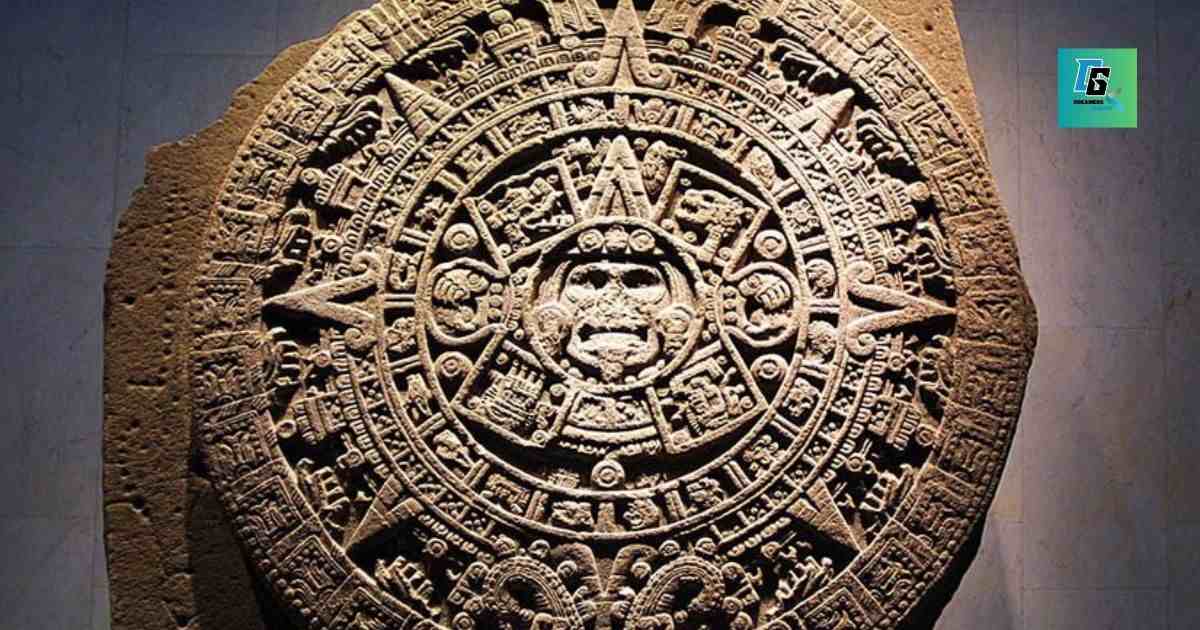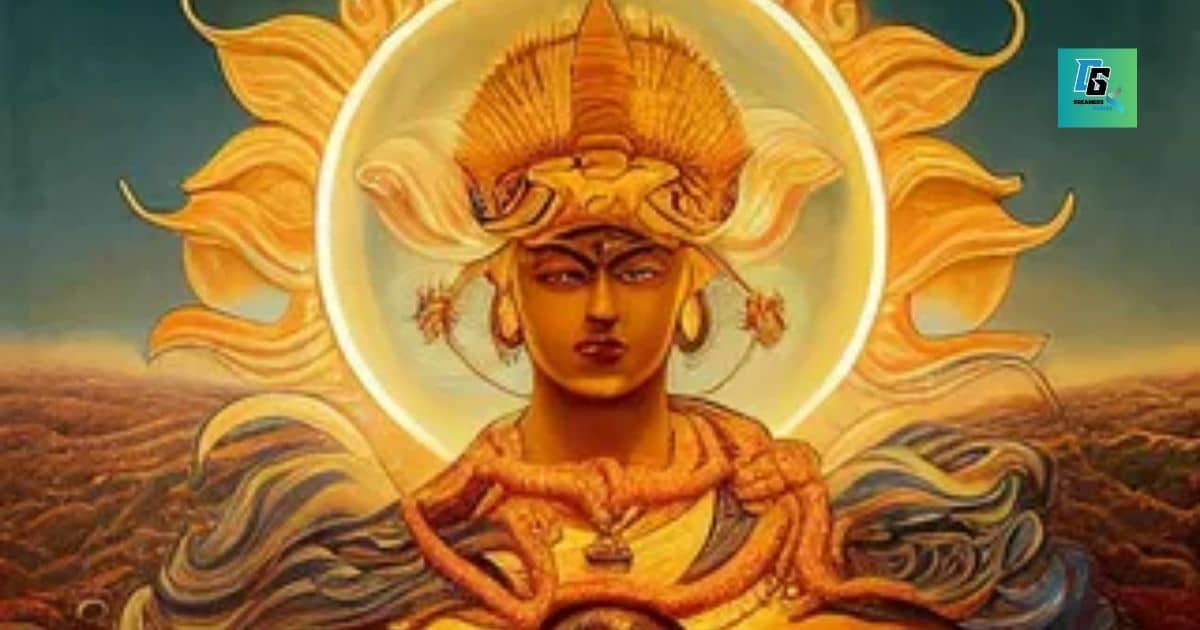The sun, that blazing orb in the sky, has captivated humanity since the dawn of time. Its warmth, light, and life-giving power have made it a central figure in cultures worldwide. This guide delves deep into the rich tapestry of sun symbolism, exploring its varied meanings across different societies and belief systems.
From ancient Egypt to modern-day America, the sun has been revered, worshipped, and imbued with profound significance. We’ll journey through time and across continents to uncover the fascinating ways humans have interpreted and represented this celestial body. Whether you’re a history buff, a mythology enthusiast, or simply curious about the sun’s cultural impact, this guide has something for everyone.
The solar significance extends far beyond its physical properties. It’s a powerful symbol that has shaped our languages, religions, and worldviews. As we explore the sun’s meaning in various contexts, we’ll see how this celestial body has illuminated not just our planet, but our collective imagination as well.
So, let’s embark on this illuminating adventure and discover why the sun continues to shine brightly in our hearts and minds. From ancient deities to modern solar imagery, we’ll uncover the many facets of sun symbolism that continue to influence our lives today.
Popular Sun Symbolism
The sun’s influence on human culture is as vast as its reach across our solar system. Its symbolism touches every aspect of life, from the practical to the spiritual. Let’s explore some of the most common meanings associated with this celestial powerhouse.
These symbols aren’t just relics of the past. They continue to shape our language, art, and worldview today. Understanding them can shed light on why we use certain expressions or why solar imagery appears so frequently in modern design and branding.
1. Life and Vitality
The sun is the ultimate life-giver. Without its warmth and light, our planet would be a cold, barren rock floating in space. This life-sustaining role has made the sun a powerful symbol of vitality across cultures.

In biology, we learn about photosynthesis – the process by which plants convert sunlight into energy. This fundamental connection between sunlight and life forms the basis for much of the sun’s symbolic meaning. Just as plants reach towards the sun to grow, we often use solar imagery to represent personal growth, health, and vigor.
Think about how we describe a healthy person as having a “sunny disposition” or how we “soak up the sun” to feel energized. These phrases aren’t just poetic – they reflect a deep-seated association between sunlight and wellbeing. In fact, sunlight plays a crucial role in our physical health, triggering the production of vitamin D and regulating our sleep cycles.
The sun’s meaning as a source of life extends to many creation myths. In numerous cultures, the sun is seen as the progenitor of all life, the cosmic force that breathes vitality into the world. This association with life and vitality makes the sun a powerful symbol in healing practices and wellness traditions worldwide.
Read More About : 25 Symbols Of Freedom And Their Meaning
2. Energy and Strength
When we think of raw power and endless energy, the sun often comes to mind. It’s no wonder that solar power has become a symbol of renewable energy and sustainability. The sun’s seemingly inexhaustible energy serves as a metaphor for strength and endurance in many cultures.

In motivational speaking and personal development, sun-related imagery is often used to inspire and energize. We talk about people having an “inner fire” or “shining bright.” These metaphors tap into the sun’s symbolism of boundless energy and strength. The idea is that, like the sun, we all have an internal source of power that can fuel our ambitions and drive us forward.
This symbolism extends to physical strength as well. Many ancient cultures associated the sun with warrior deities or used solar imagery in their military symbols. The connection between the sun and strength continues today in various forms, from sports team logos to energy drink branding.
The sun’s energy is also linked to creativity and productivity. Just as the sun’s rays nourish plants, allowing them to grow and bear fruit, we often associate sunny days with increased energy and output. This solar significance in our daily lives underscores the deep-rooted connection between the sun and our perception of energy and strength.
3. Radiance
The sun’s brilliant light has made it a universal symbol of radiance and illumination. This solar imagery goes beyond physical light – it often represents knowledge, truth, and enlightenment. When we say someone has a “radiant smile” or a “glowing personality,” we’re tapping into this solar symbolism.

In art and literature, the sun’s radiance is often used to symbolize beauty, charisma, and divine presence. Think of how halos in religious art mimic the sun’s rays, or how we describe particularly charming people as having a “sunny” personality. This association between radiance and positive qualities is deeply ingrained in many cultures.
The concept of radiance also extends to ideas of fame and notoriety. We talk about celebrities being “in the spotlight” or having their moment “in the sun.” These phrases reflect the sun’s symbolism of visibility and prominence. Just as the sun outshines other celestial bodies, to be radiant in a metaphorical sense means to stand out and be noticed.
In many spiritual traditions, the sun’s radiance is associated with inner illumination or spiritual awakening. The journey towards enlightenment is often described as moving from darkness into light, drawing on the sun’s meaning as the ultimate source of illumination. This symbolism of radiance as spiritual or intellectual enlightenment is a powerful theme in many philosophical and religious texts.
4. Positivity
There’s a reason we associate sunny days with good moods. The sun has long been a symbol of positivity, happiness, and optimism. This connection is more than just psychological – sunlight actually triggers the release of serotonin, often called the “feel-good” hormone, in our brains.

In language and culture, we see this association play out in numerous ways. We describe optimistic people as having a “sunny outlook” or tell someone to “look on the bright side.” These phrases draw on the sun’s symbolism of positivity and hope. Even in pop culture, songs about the sun often carry themes of joy and optimism.
This symbolism has real-world applications too. Light therapy, which mimics natural sunlight, is used to treat seasonal affective disorder and other mood disorders. It’s a testament to the powerful psychological impact of the sun and its enduring symbolism of positivity.
The sun’s meaning as a symbol of positivity is also reflected in various cultural practices. Many societies have festivals and celebrations tied to the sun, particularly around solstices and equinoxes. These joyous occasions often mark the changing of seasons and the promise of new beginnings, further reinforcing the sun’s association with positivity and hope.
5. Pride
While the sun is often associated with positive qualities, it can also symbolize less flattering traits like pride and arrogance. The phrase “thinking the sun shines out of one’s behind” is a colorful way of describing someone who’s overly prideful. This association stems from the sun’s central position in our solar system and its overwhelming presence in the sky.

In mythology, we see this symbolism play out in stories of hubris. The Greek myth of Icarus, who flew too close to the sun and fell to his doom, is a classic cautionary tale about the dangers of excessive pride. Similarly, in many cultures, solar deities are often portrayed as powerful but sometimes arrogant figures.
This dual nature of sun symbolism – representing both positive qualities like confidence and negative ones like arrogance – reflects the complexity of human nature. It reminds us that even our most positive traits can become liabilities if taken to extremes.
The sun’s meaning in terms of pride isn’t always negative, however. In many cultures, the sun is associated with honor, dignity, and rightful pride. National flags and emblems often incorporate sun imagery to represent the pride and glory of the nation. This positive aspect of pride symbolism reminds us of the fine line between healthy self-esteem and excessive ego.
6. Guidance
For millennia, humans have looked to the sun for guidance – both literal and metaphorical. Its predictable path across the sky has been used for navigation and timekeeping since ancient times. This practical use has led to the sun becoming a powerful symbol of guidance and direction in many cultures.

In spiritual contexts, the sun often represents divine guidance or enlightenment. Many religions and philosophical traditions use the metaphor of “seeing the light” to describe gaining wisdom or understanding. This imagery draws on the sun’s role as the ultimate source of illumination in our world.
The sun’s guidance symbolism extends to personal development as well. We often talk about “following our inner light” or “letting our light shine.” These phrases use solar imagery to represent self-guidance and the expression of one’s true self. They suggest that, like the sun, we each have an internal compass that can guide us if we learn to listen to it.
In many ancient cultures, solar worship was closely tied to ideas of cosmic order and divine guidance. The sun’s regular movements were seen as a manifestation of universal laws, providing a model for human behavior and social organization. This sun meaning as a guide for life continues to influence our thinking today, even if we’re not always conscious of it.
7. Divinity
Throughout history, the sun has been worshipped as a deity in many cultures. Its life-giving warmth, its regularity, and its seemingly omnipresent nature made it a natural choice for divine representation. From Ra in ancient Egypt to Amaterasu in Japan, solar deities have played central roles in numerous pantheons.

This association between the sun and divinity has left a lasting mark on religious symbolism. Many religions use light as a metaphor for divine presence or knowledge. The concept of “enlightenment” in Buddhism and other Eastern philosophies draws on this solar imagery. Even in monotheistic religions that don’t worship the sun directly, solar symbolism often appears in descriptions of divine glory or heavenly realms.
The sun’s divine associations extend beyond organized religion. In many spiritual traditions, the sun represents the divine masculine energy, often paired with the moon as its feminine counterpart. This symbolism reflects the sun’s perceived qualities of strength, action, and outward expression.
The sun’s meaning as a divine symbol also ties into ideas of cosmic order and universal harmony. Many ancient faiths saw the sun’s regular movements as evidence of divine law governing the universe. This concept of the sun as a manifestation of cosmic order has influenced philosophy, science, and spirituality across cultures and throughout history.
Read Also : 17 Symbols of Innocence and Their Heartwarming Meanings
8. Gold
The connection between the sun and gold runs deep in human culture. Both share qualities of brilliance, value, and incorruptibility. In many ancient societies, gold was seen as a earthly manifestation of the sun’s power, leading to its use in religious artifacts and royal regalia.

In alchemy, the sun was associated with gold, represented by the same symbol: a circle with a dot in the center. This connection wasn’t just symbolic – alchemists believed that gold was produced by the sun’s rays acting on the earth over time. While we now know this isn’t scientifically accurate, the symbolic link between the sun and gold persists.
Today, we still see this association in language and culture. We describe particularly good or valuable things as “golden,” drawing on both the material value of gold and its solar symbolism. The “golden hour” in photography refers to the warm, rich light just after sunrise or before sunset, linking the aesthetic qualities of gold with the sun’s light.
The sun’s meaning in relation to gold also extends to ideas of perfection and achievement. We speak of the “golden age” to describe a period of peak achievement or prosperity. Olympic champions receive gold medals, symbolizing the highest level of achievement. These uses of gold imagery draw on the sun’s associations with excellence, value, and divine favor.
Rising Sun Symbolism
The rising sun holds a special place in human symbolism, representing hope, new beginnings, and fresh opportunities. This powerful image of the sun emerging from darkness resonates across cultures and has found its way into numerous national symbols and cultural traditions.
In the USA, the rising sun has particular significance. It features prominently in the Apollo space program logo, symbolizing America’s aspirations in space exploration. The phrase “American sunrise” is often used to describe periods of national renewal or optimism. This symbolism taps into the American ideals of progress and the pursuit of a brighter future.
The rising sun symbolism is deeply ingrained in many cultures. In Japan, the rising sun is a national symbol, featured on their flag and representing the nation’s identity as the “Land of the Rising Sun.” This imagery speaks to ideas of national pride, cultural heritage, and the promise of a new day.
Many ancient religions incorporated rising sun rituals into their practices. These ceremonies often celebrated renewal, purification, and the triumph of light over darkness. The sun’s meaning in these contexts was often tied to ideas of spiritual rebirth and the cyclical nature of existence.
In literature and art, the rising sun is a powerful motif. It often signifies hope, a fresh start, or the dawn of a new era. This imagery is particularly potent in works dealing with themes of perseverance, redemption, or societal change. The rising sun serves as a universal symbol of optimism and the potential for positive transformation.
Setting Sun Symbolism
While the rising sun symbolizes beginnings, the setting sun represents endings and closure. This doesn’t always carry negative connotations – a sunset can symbolize the successful completion of a journey or the peaceful end of a full life. The beauty of a sunset often evokes feelings of reflection and nostalgia.

In literature and art, the setting sun often symbolizes the passage of time or the end of an era. The term “golden years” for retirement comes from the warm, golden light of the evening sun. Many cultures associate the west, where the sun sets, with the afterlife or spirit world, reflecting the sun’s daily “death” and rebirth.
Setting Sun Symbolism
The setting sun symbolism also carries connotations of completion and fulfillment. Just as the setting sun signals the end of a day’s work, it can represent the satisfaction of a job well done or a life well-lived. This aspect of sun symbolism is often invoked during farewell ceremonies or retirement celebrations. In particular, it emphasizes the transition to a new phase of life, much like the sun’s setting marks the close of the day.
Moreover, just as the setting sun signifies an end, it also heralds the promise of a new dawn, representing hope and new beginnings. Thus, these ceremonies beautifully mirror the natural cycle, highlighting the significance of change and renewal.
In many cultural sun symbols, the setting sun represents introspection and wisdom. As the day winds down, sunset is viewed as a time for reflection and contemplation. This symbolism is echoed in meditation practices and philosophical traditions that stress the value of quiet reflection.
The interplay between rising and setting sun symbolism highlights the cyclical nature of existence.Together, they represent the eternal cycle of birth, death, and rebirth, which is a fundamental concept in many primitive beliefs about the sun. In this way, the sun embodies the interconnectedness of life’s stages.
Furthermore, this cyclical nature not only reflects the natural rhythms of the universe but also serves as a profound reminder of the continuity of existence across cultures. Thus, the sun’s symbolism transcends mere illumination, resonating deeply with the essence of life itself. This cyclical symbolism reminds us of the constant flux of life and the potential for renewal even in endings.
Sun Symbolism Across Cultures And Societies
The sun’s universal presence has led to a rich tapestry of cultural sun symbols across the globe. Each society has developed its own unique interpretation of the sun’s meaning, influenced by their environment, beliefs, and way of life. Let’s explore how different cultures have perceived and represented this celestial body.
Sun worship in Egyptian culture
In ancient Egypt, the sun was more than just a celestial body—it was the very essence of existence. The sun god Ra (or Re) stood at the pinnacle of the Egyptian pantheon. Ra’s daily journey across the sky in his solar boat was seen as the source of all life and order in the universe.

Ra symbolism permeated every aspect of Egyptian life. The pharaohs claimed divine lineage from Ra, legitimizing their rule. The sun disk, often depicted with wings or as part of a scarab beetle, was a ubiquitous symbol in Egyptian art and architecture. The shape of the pyramids is believed to represent the sun’s rays descending to earth.
Egyptians didn’t worship only Ra; they also revered other solar deities like Atum, Khepri, and Horus, each symbolizing different aspects of the sun’s power.. This complex solar theology reflects the central role the sun played in Egyptian cosmology and daily life.
Sun symbolism in the Aztecs and Incas
In Mesoamerica, the sun held a position of supreme importance. The Aztec sun god, Tonatiuh, was believed to require human sacrifices to continue his daily journey across the sky. This belief led to elaborate rituals and sacrifices, highlighting the profound impact of sun meaning in Aztec society.

The famous Aztec Sun Stone, a massive carved monument, depicts Tonatiuh at its center surrounded by symbols representing different cosmic eras. This intricate calendar stone showcases the Aztecs’ advanced astronomical knowledge and the central role of the sun in their understanding of time and cosmic cycles.
The Incas revered the sun god Inti as the ancestor of their royal family. They designed the capital, Cusco, in the shape of a puma, placing the main sun temple, Coricancha, at its heart. Today, Peru continues to celebrate the Inti Raymi, or Festival of the Sun, highlighting the lasting influence of Inca sun worship.
Sun symbolism in Hinduism
In Hinduism, the sun god Surya is one of the major deities. Surya is often shown riding a chariot pulled by seven horses, symbolizing the seven colors of the rainbow. Hindus address the Gayatri Mantra, one of their most sacred prayers, to Savitri, a form of Surya.

Many Hindu practices involve honoring the sun. The Surya Namaskar, or Sun Salutation, is a sequence of yoga postures often performed at sunrise. Some Hindus also practice Surya Upasana, a meditation focusing on the sun, believed to bring health, wisdom, and spiritual enlightenment.
The sun’s meaning in Hinduism extends beyond religious practices. In Ayurveda, the traditional Indian system of medicine, the sun is associated with the Pitta dosha, which governs metabolism and transformation. This connection highlights the sun’s perceived influence on physical health and well-being.
Read More About : 23+ Powerful Symbols of Growth from Around the World
Sun symbolism in Native American cultures
Among Native American tribes, sun symbolism varies widely but often centers on themes of creation, renewal, and spiritual power. Many tribes performed sun dances, elaborate ceremonies that honored the sun and often involved personal sacrifice or endurance tests.
For the Plains Indians, the sun was often seen as a manifestation of the Great Spirit. The Hopi people of the Southwest have a complex solar mythology, with the sun featuring prominently in their creation stories and religious ceremonies. The Sun Dance, practiced by various Plains tribes, was a critical ritual that often lasted for days and was believed to renew the earth and its people.
These Native American sun symbols often intertwine with other elements of nature, reflecting a holistic worldview where the sun is part of a greater cosmic balance. This perspective offers a unique contribution to global sun symbolism, emphasizing harmony and interconnectedness.
Sun Meaning In Asian Cultures
In Chinese mythology, there’s a fascinating story about ten suns, all brothers, who were supposed to take turns illuminating the earth. One day, they all came out together, scorching the land. A hero named Hou Yi shot down nine of them, leaving the one sun we see today. This myth reflects the delicate balance between the sun’s life-giving and destructive powers.
In Japan, the sun goddess Amaterasu is central to Shinto mythology. She’s considered the ancestress of the Japanese imperial family, and her symbol – a red circle representing the rising sun – appears on Japan’s national flag. This deep connection between the sun and national identity showcases the enduring power of solar symbolism.
In many Asian cultures, the sun is associated with yang energy—the active, masculine principle that complements the moon’s yin energy. This concept of balance and duality is a key aspect of sun meaning in Asian philosophical and spiritual traditions.
Sun in Greek mythology
The ancient Greeks associated the sun with several deities. Helios was the personification of the sun itself, often depicted driving a fiery chariot across the sky. Later, Apollo became associated with the sun, along with music, poetry, and prophecy. The Oracle of Delphi, dedicated to Apollo, was one of the most important religious sites in the ancient Greek world.
Greek philosophers also contemplated the nature of the sun. Anaxagoras proposed that the sun was a giant, fiery mass rather than a deity, a controversial idea at the time. This tension between mythological and rational explanations of the sun reflects the evolving understanding of the natural world in ancient Greek society.
The Greek myths about the sun, such as the story of Icarus flying too close to the sun, have become enduring metaphors in Western culture. These stories continue to influence literature, art, and even modern psychological theories, demonstrating the lasting impact of Greek solar mythology.
Conclusion
As we’ve journeyed through the rich landscape of sun symbolism, we’ve seen how this celestial body has illuminated human culture in countless ways. From the life-giving rays that nurture our crops to the divine light that inspires our spirituality, the sun’s influence is truly universal.

We’ve explored how different societies have interpreted the sun’s power, from the grand solar deities of ancient Egypt to the nuanced sun symbolism in Native American rituals. We’ve seen how the rising sun represents hope and new beginnings, while the setting sun evokes reflection and closure. Through it all, the sun remains a powerful symbol of energy, guidance, and the cycle of life itself.
The sun’s symbolism transcends cultural boundaries, appearing in primitive beliefs and modern ideologies alike. It’s a testament to the sun’s profound impact on human consciousness that so many diverse cultures have developed rich traditions of sun worship and solar imagery.
Modern World
As we move forward in our modern world, the sun’s symbolism continues to evolve. Solar power is becoming a beacon of sustainable energy, while sunlight therapy offers new approaches to mental health. Yet even as our scientific understanding of the sun grows, its symbolic power remains undiminished. It continues to shine in our art, our language, and our imagination.
What does the sun symbolize to you? Perhaps it’s the warmth of a summer day, the promise of a new dawn, or the golden glow of a perfect moment. Whatever it means to you, remember that you’re part of a long human tradition of finding meaning in this remarkable star. As you go about your day, take a moment to look up and appreciate the sun – not just for its light and warmth, but for the rich tapestry of meaning it has inspired across human history.
In the end, the sun’s enduring symbolism reminds us of our shared humanity. Despite our differences, we all live under the same sun, and its light touches us all. This universal experience continues to unite us, inspire us, and guide us towards a brighter future.